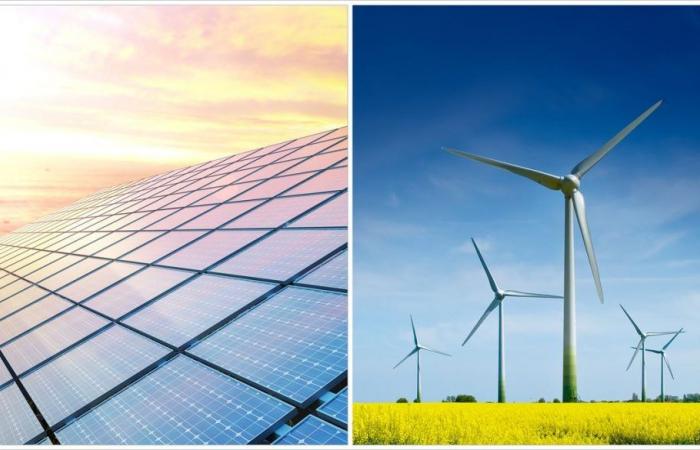Moving, heating, eating: the uses of energy are multiple and omnipresent on Earth. However, according to experts, energy demand across the globe is expected to double within 25 years. To meet the needs of a growing world population, and in order to limit greenhouse gases resulting from human activity and responsible for climate disruption, a growing place must be given to renewable, therefore non-polluting, energy sources. .
“The energy field is important: it is found at all levels of society,” explains Professor Mario Leclerc, of the Department of Chemistry at Laval University. Energy is needed to purify water, for agricultural activities, transport, heating. It takes energy to extract a fossil fuel like coal from the ground.”
On Tuesday September 24, Professor Leclerc gave an online presentation on energy challenges in the world. His presentation was part of the general public conferences of the Faculty of Science and Engineering.
“Why is the question of energy so important?” he asked from the outset.
In response, the professor listed some statistics from a recent World Bank report. Among other things, nearly 600 million people in sub-Saharan Africa did not have access to electricity in 2021. The UN, for its part, predicts that the world population will reach more than 10 billion people around 2080, or as many of energy consumers.
“Energy,” he maintains, “will represent a major challenge in the 21e century, just like water, food, the environment, diseases, overpopulation. Everything is connected, it all speaks to each other. I would put all of these issues on the same footing. The situation encompasses a huge number of challenges that all societies will have to face.”
Nine major sources of energy
There are nine major current energy sources. These are, in order of importance, oil, natural gas and coal, biomass and nuclear power, as well as so-called renewable energies, namely solar, wind, biomass, hydroelectricity and geothermal energy. “Currently,” explains Mario Leclerc, “between 65% and 70% of global energy consumption comes from oil, natural gas and coal.”
Humanity needs 15 terawatts of electricity on a global scale at any given time. Two thirds of this energy currently comes from oil, natural gas and coal.
In the ranking of the most energy-intensive territories, Quebec occupies a special place. The 2024 edition of The state of energy in Quebec reveals that citizens consumed on average 250% more energy than the global average in 2021.
“Quebecers, like Canadians, are large consumers of energy,” says the professor. We beat the Americans in this regard. In Europe, energy is relatively more expensive than here. Europeans consume half as much energy as us.”
Fifteen additional terawatts
The energy requirement on the planet currently stands at 15 terawatts (TW) at any time. One terawatt is equal to one billion kilowatts.
Experts anticipate that humanity will need an additional 15 terawatts in the next 25 years. “Even in Quebec,” underlines Mario Leclerc, “we are starting to worry about running out of electricity.”
According to him, it is clear that there is enormous pressure, particularly from the increasingly strong middle classes in so-called emerging countries, to move towards greater energy consumption for greater comfort and other needs. .
“The great global challenge,” he explains, “comes mainly from India, China and Brazil, whose populations total around 3 billion people. However, these three countries consume between 10 and 20 times less energy per person than in countries such as the United States, Japan, France and the United Kingdom. Who are we to tell them not to change their lifestyle, not to try to get rich, not to buy a house?
Known reserves
One of the tables presented by the professor concerned the known reserves of energy sources. In the case of coal, for example, the reserves contained in the planet’s subsoil would correspond to approximately 900 terawatts of energy. Enough to meet global needs for decades to come.
For uranium, which powers nuclear power plants, known reserves correspond to between 90 and 300 terawatts of energy. “We think that nuclear energy is infinite,” explains Mario Leclerc. The known reservations say the opposite.”
According to him, we can hope to obtain between 25 and 70 additional TW per year with wind turbines installed all over the world. Experts calculate that the potential global hydroelectricity reserve would be between 3 and 4 additional TW per year “if we wanted to build all the possible hydroelectric power stations on the planet.” As for the Sun, it sends 23,000 TW of energy to the Earth per year. “The Sun is a huge reservoir of energy,” he says. In one hour, the planet receives all the energy that humanity consumes in a year.”
According to the professor, relatively good news comes from the United States regarding energy consumption. “Over the years, we have observed a leveling off and a slight decrease in total American consumption,” he maintains. We could say that we are heading in the right direction.”
The oil company Shell has published a projection on the different energy sources for the year 2100. “The good news,” underlines Mario Leclerc, “is that everything that is renewable should be dominant. Shell calculations show a net dominance of solar at 37.7% in meeting annual global energy needs. One of the advantages of solar energy is that it is free and available everywhere. It does not belong to anyone and it is not the subject of political issues.”
The Shell study indicates that in 2100, oil would only meet 10.1% of global energy needs and coal only 3.9%.
This graph from the Shell company shows the degree of importance that major energy sources could have around 2100. To highlight: the 37% of solar energy and the 10% of oil.
— Shell







